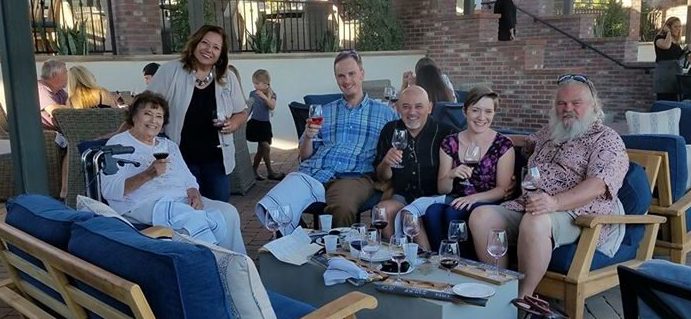About two years ago, Laura and I moved to New York City.
Despite being at the epicenter of the coronavirus outbreak, we absolutely LOVE living here. The city has an energy and vibrancy that is almost hard to describe.
Still, there is one thing (other than our family) that we miss about living in Southern California: the wineries.
Specifically, we miss Leoness Cellars.
The winery was only about 20 minutes from our house, and, as wine club members, we went there every week. It became our Friday ritual to head over for lunch and then spend the afternoon on the terrace writing and working (sipping wine as we went, of course!).
It was a magical, never-ending experience.
And that was the point.
The Big Idea: Transforming the Ordinary into an Experience
I was reminded of the power of this sort of experience when Laura signed us up as members (afar) of Justin Vineyards in Paso Robles.
Not only did we get our first half case of wine (including two bottles of the spectacular Isosceles red blend!), but we received their magazine, detailed descriptions of each bottle, and a few other things clearly designed to make us feel that we were now part of a very exclusive club.
If you’ve ever been a member of a winery, none of this will sound surprising.
But here’s the thing: it should.
When I lived in California, I became friends with a number of the local winemakers (I swear, I had no ulterior motives!). And I’ll never forget the time that one of them told me, “Charlie, in the end, we’re basically just farmers.”
It’s true, of course.
Their primary business is growing and harvesting grapes. It all starts in the ground. But from that simple and ordinary beginning, the best winemakers transform farming into art.
But they do more than just use the wine making process to coax subtle aromas and flavors from those grapes and create a delicious product. The very best of them go further, transforming a fantastic, but ultimately ephemeral product into an experience that we want to relive repeatedly and share with those we love.
This realization hit me as Laura and I stood in our kitchen having a lively ten-minute discussion about Justin’s unique flavor profiles, their other wines we wanted to try, and our excitement for the next shipment.
Justin and Leoness, like many of the great winemakers, have managed to create an experience that extends far beyond the simple process of purchasing and consuming their products.
And that is precisely what every leader will need to do in the Digital Era.
The Impact: Looking Beyond the Product
There’s a pretty good chance that whatever product or service your organization sells, it isn’t anywhere near as sexy or as fun as wine.
That’s OK. The basic process of transforming the ordinary into an experience is the same.
In the Digital Era — a time in which the customer experience is at the center of everything — getting this transformation right is essential.
The Next Step: Become a Digital Era Winemaker
As a Digital Era leader, you must get the customer experience right. It will be the foundation for everything you do as you lead your organization into this new era.
But I recognize that while the words sound simple, it can be hard to get your head around all of this. What does it really mean, and what must you do to begin to pivot your organization around delivering a differentiated — and winning — customer experience?
I hope that the winemaker analogy will help you visualize what that might look like for you and your organization.
So your next step is to take a look and get your head around how you will pivot your organization around the customer experience.
And then, well, I guess it will be time to start making some wine. I can’t wait!
“Great wine requires a mad man to grow the vine, a wise man to watch over it, a lucid poet to make it, and a lover to drink it.” – Salvador Dali
Tag/s:Customer ExperienceCustomer JourneyPersonal Development






Great article! The winemaker analogy is right on target for many industries. Thanks for this thought provoking and inspiring article.